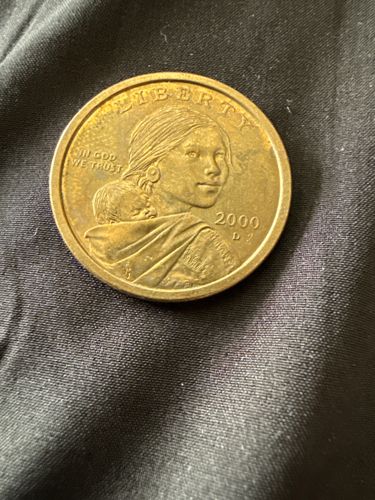Sacagawea Dollar (Native American Dollar)
Country of Origin: United States
Year of Issue: 2000
Denomination: One Dollar
Composition: Manganese brass clad (88.5% copper, 6% zinc, 3.5% manganese, 2% nickel)

Brief Description
The obverse of the coin features a portrait of Sacagawea, a Shoshone woman who helped the Lewis and Clark Expedition. She is depicted carrying her infant son, Jean Baptiste Charbonneau, on her back. The word "LIBERTY" is above her, "IN GOD WE TRUST" to her left, and the year "2000" and mint mark "D" (for Denver Mint) below her.
Historical Significance
The Sacagawea Dollar was introduced in 2000 to replace the Susan B. Anthony dollar, which had not been widely accepted due to its similar size and milling to the quarter. Sacagawea was chosen as the subject to honor her contributions to American history and to represent Native American culture. This coin series initially featured the same reverse design (an eagle in flight) for several years, then switched to annual rotating reverse designs showcasing different aspects of Native American contributions and history.
Estimated Value
For a 2000-D Sacagawea Dollar in circulated condition, the value is typically its face value, "$1". Uncirculated examples can fetch slightly more, generally a few dollars, though some error varieties or high-grade specimens can be worth more to collectors.
Care Instructions
To preserve the coin's condition, handle it by the edges to avoid transferring oils from your skin, which can cause discoloration. Store it in a cool, dry place, preferably in archival-safe holders like Mylar flips, coin capsules, or albums designed for coin storage. Avoid cleaning the coin, as this can devalue it by damaging the patina and surface details.
Created At: 2025-10-29T19:24:45.083272